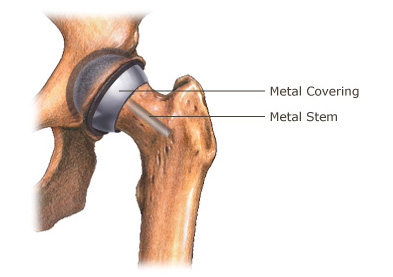
What is total hip replacement surgery?
Total Hip Replacement is a surgical procedure that replaces one’s damaged hip joint with prosthetic materials called the implants. They are well built and long-lasting artificial hip joints. The main purpose of this procedure is to relieve the patients from arthritis of the hip, meaning a great escape from the pain and inflammation of the hip joint. It’s a treatment modality that is sought when no other therapies offer pain relief any more from painful hip joints. With this surgery, one can sooner get back to all movements and motions to continue their daily life activities.
Who requires total hip replacement surgery?
Ageing people with hip joint osteoarthritis are usual candidates of THR in western world. However, in India, majority of patients requiring total hip replacement suffer from avascular necrosis or damaged blood supply to hip or post-traumatic arthritis resulting from previous hip injuries or fractures.
THR is also an ultimate solution for those with rheumatoid arthritis, sickle cell disease resulting in hip damage.
If you experience following symptoms, you may require THR surgery.
- Severely painful hip joints that limit routine activities.
- Difficulty in walking, sitting or climbing up or down stairs.
- Limp while walking due to shortness of involved leg.
- No relief from other therapies or pain medications.
How THR is performed
Total hip replacement can be performed either from front or back of the hip joint depending upon the surgeon’s preference and experience. THR means replacing the damaged hip ball and socket both at one go. After exposing the involved hip joint, the hip ball is cut at appropriate angle and length from its neck.
Then, the socket is reamed to removed all the dead tissues and worn-out lining or the cartilage of the socket till fair bleeding surface is reached. This has to be carried out with proper orientation and angles so as to put the artificial socket at its original native place in most accurate manner. After cleaning the socket, artificial socket which may either be cemented or cementless is fitted into the native socket.
After preparing the socket, the bone marrow canal or the medullar canal of the thigh bone or femur is opened up, reamed and prepared to put appropriate sized artificial implant called the Femoral Stem which again can be fitted with or without cement, depending upon the age of patient and quality of the host bone. After putting original implants at socket and the femur, the articulating surface or the coupling for hip joint is put which might be metal ball and plastic socket liner or ceramic ball and ceramic liner depending upon which total hip system is being used.
After that, the hip joint is reduced and movement at the artificial hip along with length of the leg is checked. Once every criteria is found to be satisfactory, wash is given and again the tissue cut previously to expose the joint are repaired and sutured back into original position.
Total Hip Replacement Recovery
There are many benefits of total hip replacement surgery. This procedure expects about 99% of the success rate. The post-surgical recovery is just fantastic. It’s quick and pain relieving. The range of motion of the joint is increased, length of the leg is restored and one can start their routine tasks quickly. However, some high-power activities like running, playing or jumping are to permanently discouraged in order to prevent early wearing out of the artificial hip joint. But, overall success and satisfaction rate following hip replacement surgery is really fantastic!
How safe is total hip replacement surgery?
People all over the world have been experiencing the success of THR. It’s totally a safe procedure. There have been many successful results of it. Since its inception, there has been tremendous innovations to make better implants so as to add many years to artificial hip joint. Added to the conventional medical treatments, the science has always invented much and made THR even better than ever. The advanced THR procedure is accurate and done almost without any risks while or after the operation.
How long will THR usually last for?
The hip implants in as many as 85% cases will last for approximately 20 years or more. It is twice as much as time it lasted in 1970s for. The innovation in surgical technologies, techniques and hip implants has yet much to offer in near future. The hip prostheses last even longer than earlier before after invention of better implant material and bearing surfaces at the hip joint.

